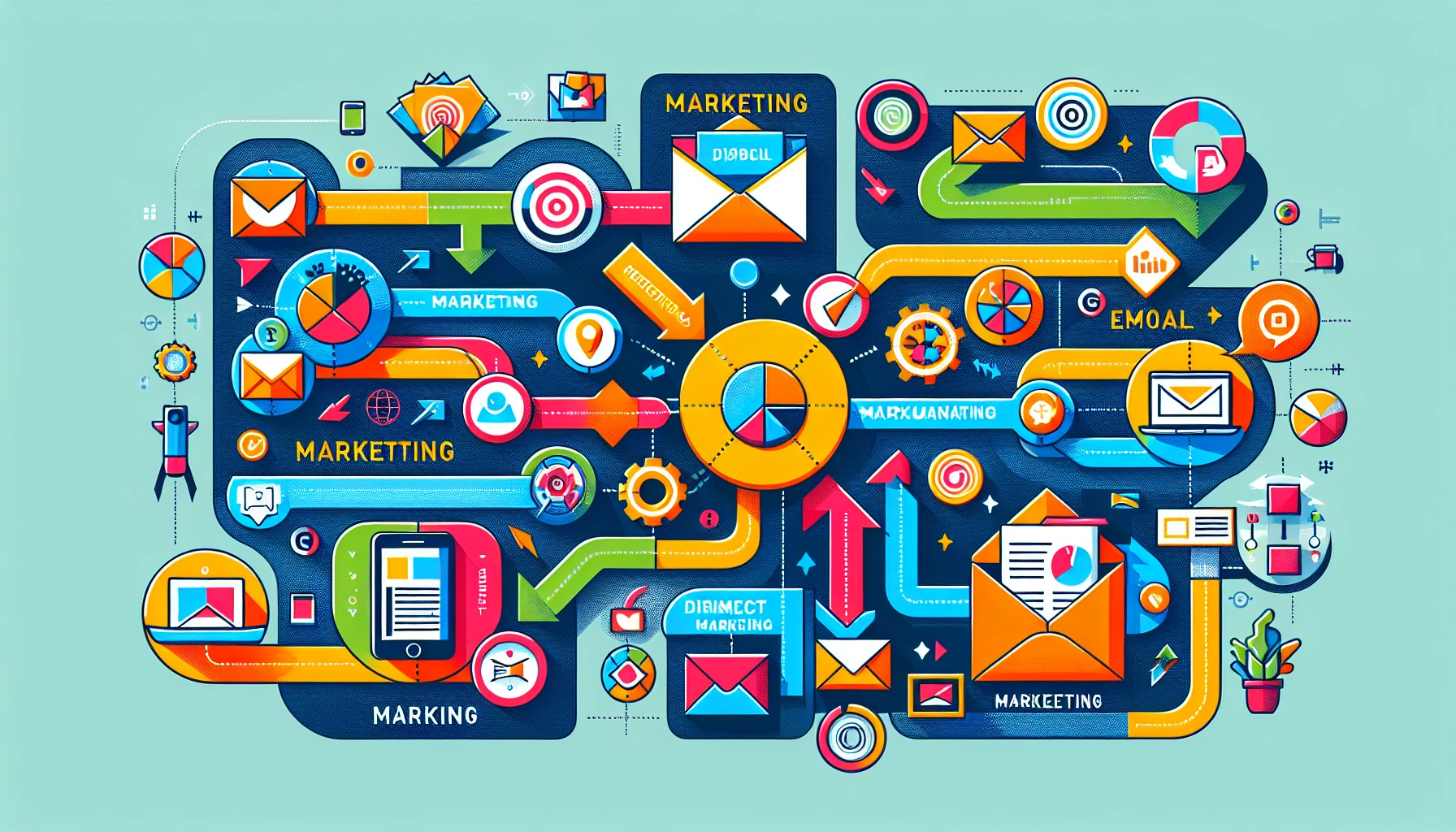Table of Contents[Hide][Show]
- Core Insights
- Summary
Frequently Asked Questions+−
- What are the main differences between marketing and marketing communications?
- What is the role of Integrated Marketing Communications (IMC)?
- What skills are essential for marketing professionals?
- How can marketing and communications professionals align their strategies?
- What career options are in marketing and communications?
What’s the difference between marketing and communications, and how do they differ? Marketing is about understanding and meeting customer needs; marketing communications (Marcom) is about delivering clear and impactful messages through channels. This article breaks down marketing vs communications, their concepts, roles, and how they work together to unlock business potential.
Core Insights
- Marketing is about creating value and customer relationships through the 4Ps, and marketing communications is about delivering to target audiences.
- Strategic marketing planning is important for identifying target markets and objectives, and integrated marketing communications are about the consistency of brand messages across all channels. Both are key business strategies for small businesses to create and maintain a positive customer impression.
- To be successful in their roles, professionals in marketing and communications need a broad skill set, including market analysis, creativity, content creation, and strong interpersonal skills.
Defining Marketing

Marketing is a big field that includes all the activities to create, deliver, and communicate value to customers. At its core, marketing is about meeting customer needs and organizational goals. That means everything from product development to promotional strategies to attract and retain an external audience.
Marketing means understanding its purpose: to connect with customers and meet their needs. Whether digital or traditional, marketing is about building relationships and delivering value. A customer-centric approach means marketing efforts align with customer needs and market demand and focus on the target customer so that what you offer resonates.
Core Elements of Marketing
Any marketing strategy is built on the marketing mix: the 4Ps: Product, Price, Place, and Promotion. These are the foundations of all marketing plans. Understanding and engaging your target audience is key to making marketing work.
Market research is the foundation of these elements. Knowing your target customers’ preferences, habits, and responses allows you to tailor products and strategies to market demand. For example, defining the product means determining what need it fulfills, what its unique value proposition is, and what its packaging is.
Pricing means balancing costs with competition and customer value. Place means distribution channels where the product is available to the customer. Promotion means all the activities, advertising, and social media campaigns to raise awareness and drive sales.
Strategic Marketing Planning
Marketing planning is the foundation of all marketing. A good marketing plan starts with knowing your target audience and the competitive landscape. Targeting markets is key, as it allows you to focus your resources on the most profitable segments.
Critical thinking and analytical skills are required here. Marketing managers need to measure and adjust campaign performance. Clear marketing objectives guide the overall business strategy, so all marketing efforts work towards the organization’s goals.
Strategic marketing planning is about learning and adapting to market trends and consumer behavior.
Understanding Communications
Definition and Purpose
Communication is the exchange of information, ideas, or messages between individuals, groups, or organizations. It involves the transmission, reception, and interpretation of information through various channels—verbal, nonverbal, written, or visual. The purpose of communication is to convey meaning and build relationships and understanding between parties.
Effective communication is essential in all aspects of life – personal, social, and professional. In a business context, communications are vital in building customer relationships, promoting products or services, and communicating the organization’s message to its target audience.
Understanding Marketing Communications (Marcom)

Marketing communication (MarCom) uses various channels and tools to communicate with the market. The goal is to get the message to specific audiences to promote the product or service. This is key to building brand awareness and preference and differentiating a brand from the competition. Marketing communication is how you do that.
Good marketing communications is about message clarity and resonance. The goal is to get the target audience to act by delivering messages that meet their needs and expectations. To do that, you must find common ground between the sender and the receiver so the message is understood.
Marketing communications involves talking to the audience and knowing consumer behavior and preferences.
Key Components of Marketing Communications (Marcom)
Marketing communications includes many elements; the main ones are advertising, public relations, and digital marketing. Advertising is about delivering clear and consistent messages to your target audience so your brand is recognizable and memorable. Public relations is about managing the brand image and building relationships with key stakeholders.
Direct marketing is another critical part of direct response advertising, in which the audience is prompted to respond to the organization. Email marketing is a form of direct marketing in which messages are commercialized to potential or current customers. However, clogged email channels can lead to lower engagement rates, which is a problem for marketers.
SEO and social media are part of Marcom. SEO gives you visibility in search engines, and social media provides a communication channel to talk to your audience.
Integrated Marketing Communications (IMC)
Integrated Marketing Communications (IMC) is a strategic approach to unifying all communications and marketing efforts across all marketing channels. Consistency builds relationships with stakeholders, trust, and loyalty. IMC is about one brand identity and overall brand awareness.
Good IMC is about integrating all channels to create one brand message and increase customer engagement. Message integration involves making all promotional materials look the same and reinforcing brand identity.
A cross-functional approach is key to IMC. This approach encourages all departments to work together to deliver one message, creating a customer-centric environment.
Differences Marketing vs Communications

Understanding the difference between marketing and communications is critical. Marketing is the broader strategy for promoting products or services. Its job is to bring the brand and product to life for the customer and deliver value through multiple touchpoints.
Marketing communications is about understanding the audience and message clarity. Communication bridges marketing and sales to ensure promotions drive immediate sales and positive brand perception. Both are important to engage the audience and drive business.
Focus and Scope
Marketing is about planning around product development and customer-centric. It’s about finding the right audience and communicating the benefits. The broader marketing goal is to create, deliver, and communicate value to customers.
On the other hand, marketing communications is about ensuring the audience gets the message, engages with it, and understands it. While marketing tries to achieve broader goals, marketing communications targets specific audience engagement and message distribution through mediums like press relations and press releases.
This difference in focus and scope allows both to work together; marketing sets the foundation, and marketing communications execute the tactics.
Tools and Techniques
Marketing has many tools to reach audiences, from analytics to content creation. These tools help plan, execute, and measure marketing efforts across all channels. Digital marketing channels like social media, email, search engines, and e-commerce platforms are ways to reach and engage audiences.
Marketers build campaigns using tactics like social media engagement, print ads, and physical presentations. Advanced tech like AR and VR can amplify these tactics and give users an experience. Online content, personalized emails, and targeted ads are designed to engage digital audiences.
Printed brochures and local newspaper ads still work for specific audiences. Digital and analog combined.
The Role of Digital Marketing
Digital Channels in Marketing
Digital marketing uses online channels to promote services or products to a target audience. These channels are the way to reach and engage customers in today’s digital world. Key digital channels are:
- Search Engines: Google, Bing, Yahoo, etc., are the platforms for search engine optimization (SEO), which helps your business appear in search results when customers seek information, products, or services.
- Social Media: Facebook, Twitter, Instagram, LinkedIn, etc., are platforms for connecting with customers, promoting products, and building brand awareness. They allow direct interaction and engagement with the target audience.
- Email Marketing: Email Marketing involves sending targeted messages to customers or potential customers via email. It’s a highly effective way to nurture leads, provide value, and drive conversions.
- Content Marketing is the creation and distribution of valuable, relevant, and consistent content to attract and retain a target audience. Examples of content marketing include blogs, articles, infographics, and videos.
- Mobile Marketing: Mobile marketing is necessary with the rise of smartphones and tablets. It’s about promoting products or services through mobile devices and making marketing accessible.
Businesses can use these digital channels to reach their target audience, amplify their marketing, and achieve their goals.
How Marketing and Communications Work Together

Marketing and communications are two sides of the same coin, working together to connect with your audience. Marketing is the bridge that swaps products or services between organizations and customers. Communications ensure the message aligns with the overall business strategy and the brand, which are critical business strategies for small businesses.
Both are equally important. Marketing optimizes products and communications to uncover customer feelings and tailor messages to specific audiences. It shapes product direction and brand presence and drives consumer action through messaging.
Aligning Strategies
A single marketing and communication strategy increases customer engagement. Effective communication is not just verbal but also listening and empathizing with your audience. This whole approach means all interactions are relevant to your target audience.
Working with cross-functional teams is vital for communications professionals to deliver on strategy. Aligning marketing objectives with communication strategy means you can execute one plan that drives engagement.
Case Studies
Case studies show marketing and communications in action. Opinion leaders can increase brand awareness and sales through endorsements. One organization in marketing communications can have profitable relationships with customers and stakeholders.
The integration delivers better brand recognition and customer engagement. Here are the facts of marketing and communications working together. These case studies are real-life examples of how alignment works.
Building Customer Relationships
Communication-Based Relationship Marketing
Communication-based relationship marketing is the process of building and maintaining relationships with customers through communication. This approach is about understanding and meeting customer needs, loyalty, and long-term engagement. The key components are:
- Customer Needs: To build relationships, businesses must understand their customers’ needs, wants, and concerns. This means conducting research and gathering feedback to tailor products and services.
- Personalization: Personalization is tailoring communication to individual customers based on their preferences and behavior. Personalized messages resonate more with customers, making them feel valued and understood.
- Consistency: Consistency is critical to building trust and credibility with customers. Consistent messaging across all channels means customers get a single brand experience.
- Feedback: Gathering and acting on customer feedback is critical to understanding customer needs and wants. It shows customers their opinions matter.
By focusing on these elements, businesses can build and maintain strong relationships with their customers, ultimately fostering loyalty and long-term success. Communication is at the heart of this, so customers feel heard, valued, and engaged.
Key Skills for Marketing vs Communications Professionals

Marketing and Marcom professionals are jacks of all trades. Here are the skills:
Market research
SEO
Strategy
Creativity
Data
Content
Presenting
Relationship building
These are the skills to develop marketing strategies and understand audience engagement.
Good interpersonal skills, teamwork, and collaboration are key to success in marketing and communications roles. Now, we look at the specific skills of marketing and Marcom professionals.
Marketing Skills
Marketing professionals need many skills to exist. Essential skills are market analysis, SEO, and strategy. These skills mean you can understand the market, optimize your digital marketing, and have a plan.
Creativity and data are key to marketing. Combining creative thinking with data allows you to create campaigns that speak to your target audience and work.
Communications Skills
Communicators need different skills, including content creation, presenting, and relationship building. Getting good at these skills means connecting with your audience and getting your message across.
Good interpersonal skills and the ability to work across disciplines are crucial to success in comms roles. These skills help you navigate communication strategies and get business outcomes.
Career Paths in Marketing and Communications
There are many career options in marketing and communications where you can use your creativity and strategy. MarCom Bachelor’s graduates can go into many of these areas. Entry-level roles are Specialist and Coordinator, with opportunities to move up to Marketing Manager, Public Relations Manager, and Marketing Director.
Job growth for marketing professionals by 2032 is significant, with over 24,000 new roles. Communications jobs will be similar.
Marketing Career Path
Marketing has many career paths for growth and progression. You can start in entry-level roles and work up to marketing manager. These roles of increasing responsibility mean you can make a real difference in businesses and brands.
A marketing career is for those who want to shape products and drive customer engagement. The many skills in marketing mean you can navigate the industry and get business outcomes.
Communications Career Path
Communicators can follow many career paths, including corporate communications, public relations, and digital media. These areas offer many opportunities to use your skills in content creation, presenting, and relationship building.
Key roles in communications involve managing the brand and building relationships with key stakeholders. As you advance in your career, you may move into specialist roles that require a deep understanding of communication strategies and audience engagement.
Good careers in communications are built on the ability to communicate and build relationships with internal and external stakeholders so that the message is heard and resonates with the target audience.
Summary
Marketing and communications professionals need to understand the different functions of their roles. Marketing is the overall strategy for crafting, conveying, and exchanging value with customers. Marketing communications is about precisely delivering messages and capturing the audience’s attention. Both are key to business growth and brand presence.
Combining strategies and working with marketing and marketing communications professionals can increase customer involvement and brand awareness. By understanding the underlying nature of marketing and the key elements of marketing communications, companies can create integrated plans that speak to their target segments.
In short, it’s the marriage of these two—marketing and its opposite in communication—that drives real engagement with customers. As markets change and consumer behavior changes continually, awareness of what’s emerging will be essential for those navigating these changing landscapes.
Frequently Asked Questions
What are the main differences between marketing and marketing communications?
Marketing is the overall strategy for delivering value to customers; marketing communications is about crafting clear messages and engaging audiences to promote products or services.
What is the role of Integrated Marketing Communications (IMC)?
IMC is about ensuring that all marketing channels communicate the same message so that the brand is strong and stakeholders are trusted and loyal.
What skills are essential for marketing professionals?
Marketing professionals need market analysis, SEO, strategic planning, creativity, and data analytics. If they master these, they can create marketing strategies and engage their audience.
How can marketing and communications professionals align their strategies?
Marketing and communications professionals should collaborate closely to align their strategies, aiming for the same goals that drive engagement and business outcomes.
What career options are in marketing and communications?
Marketing and communications offer many career options, including corporate communications, public relations, digital media, and marketing management.
 What is SCO in Marketing: A Comprehensive Overview
What is SCO in Marketing: A Comprehensive Overview